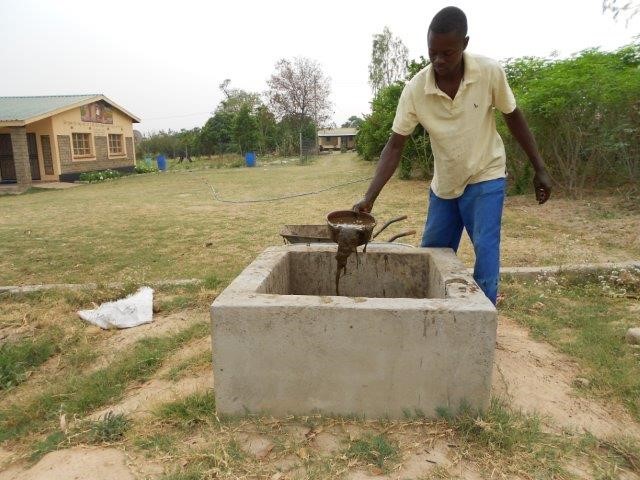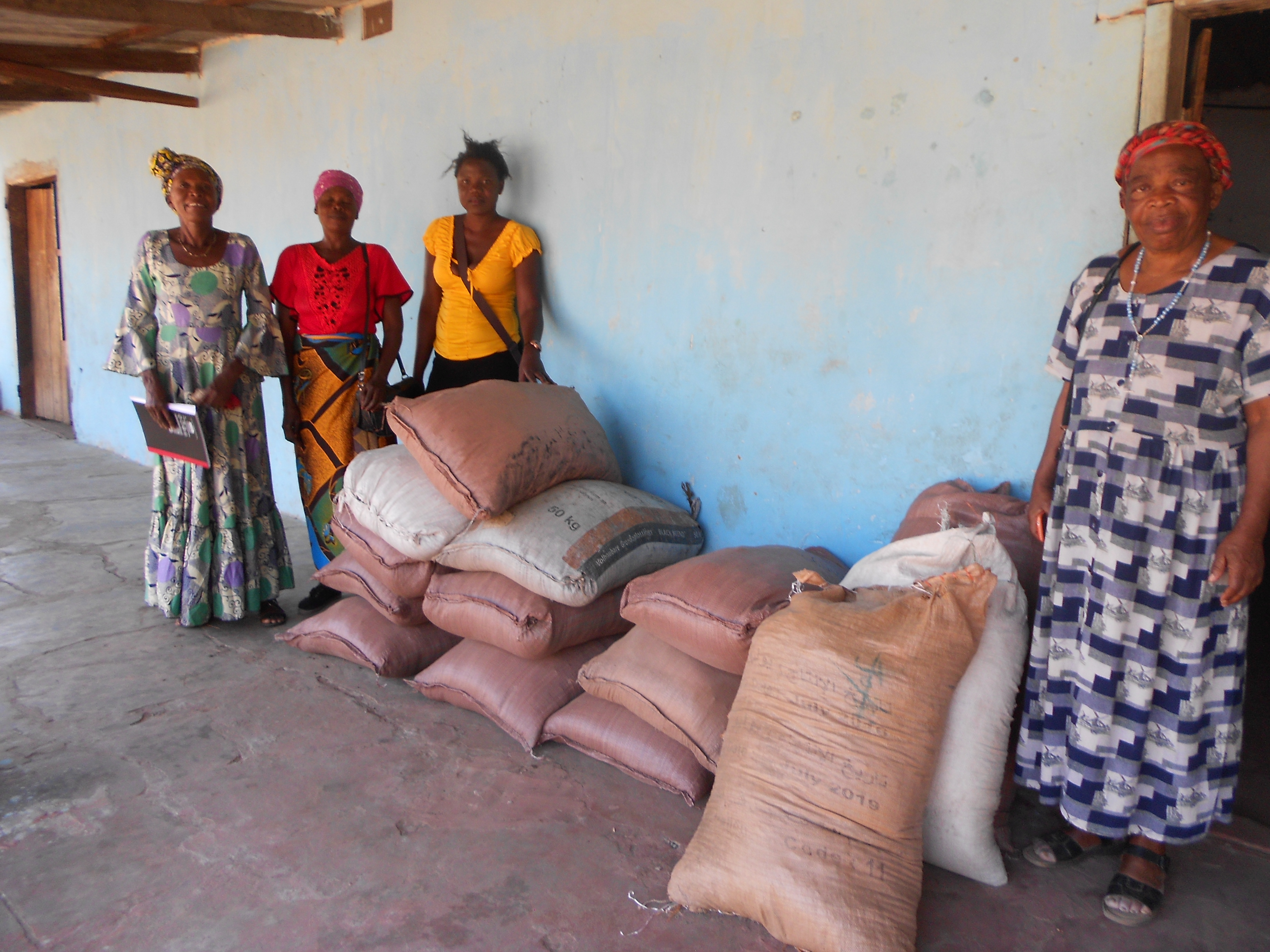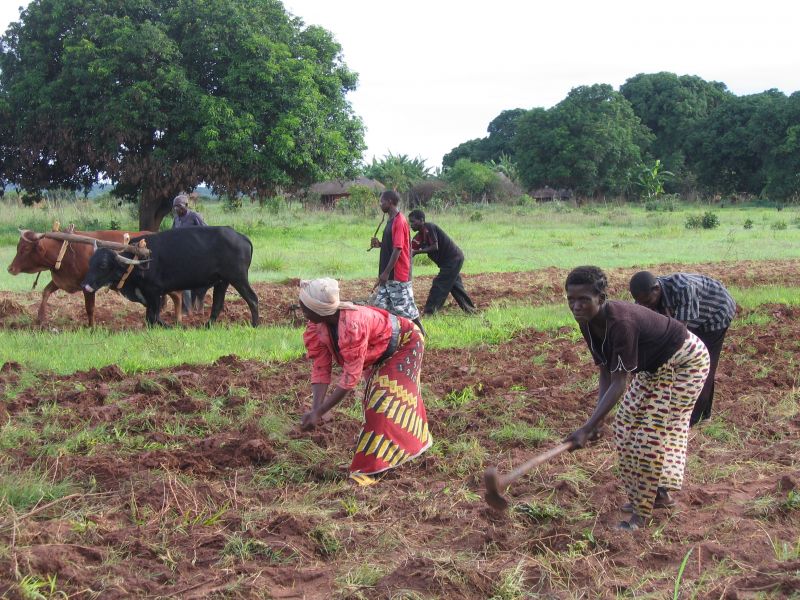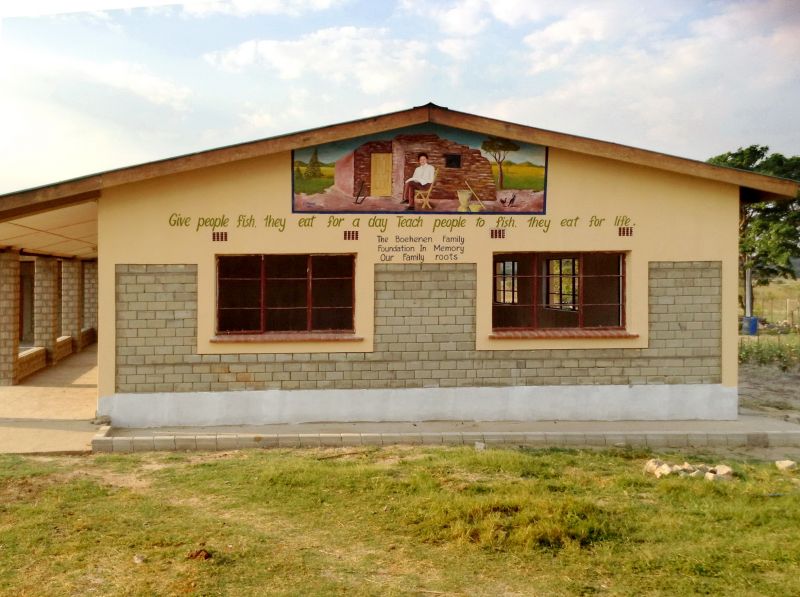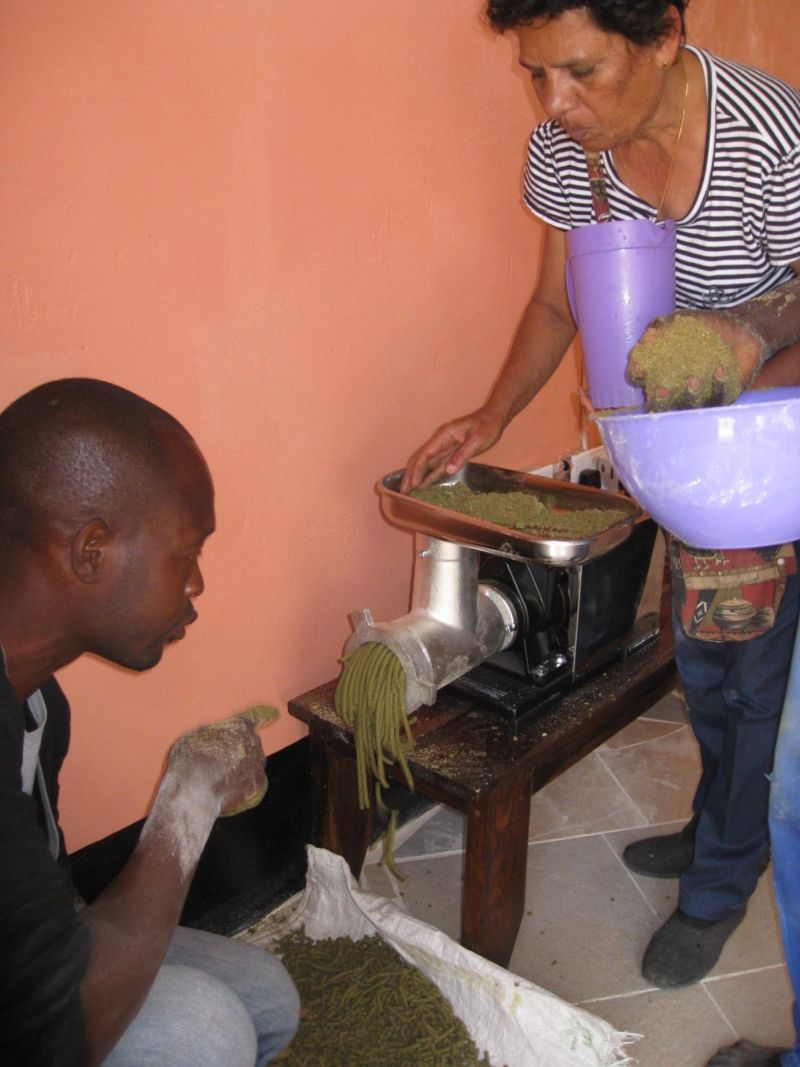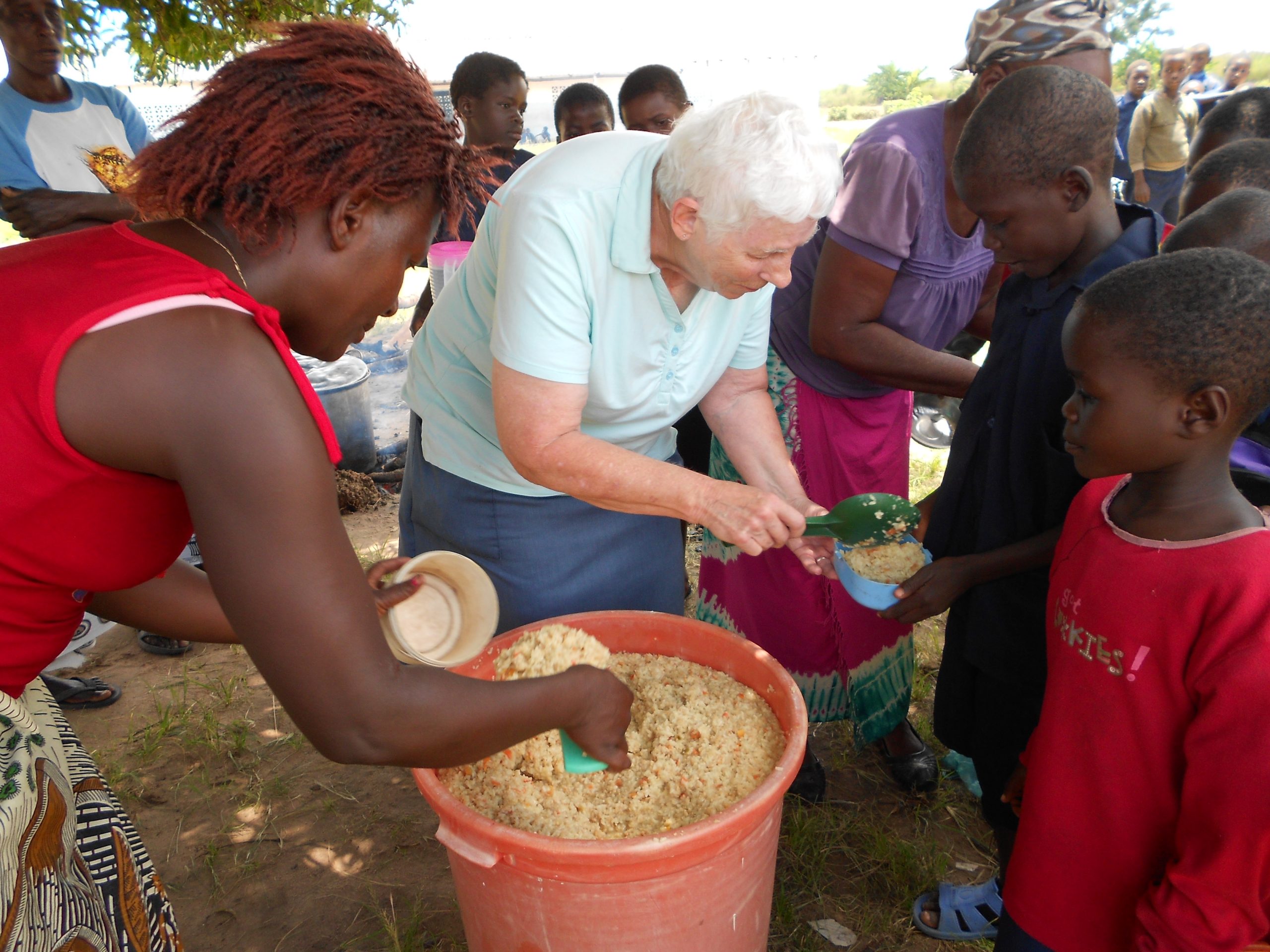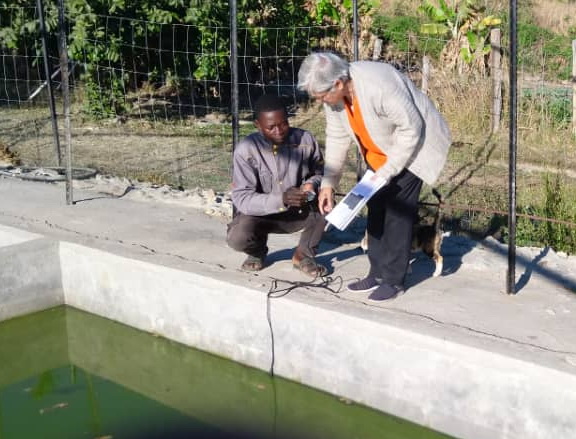Zambia, located on the edge of the Kalahari Desert in southern Africa, has the world’s highest rate of HIV/AIDS. This compounded by lack of employment, leaves the majority of the people in the Kaoma area extremely poor. This ministry is part of the work of Presentation Sisters from Ireland, India, England, New Zealand, Zambia and the United States. The primary purpose of the ministry in Kaoma and surrounding areas is to assist the people in becoming self-sustaining.
Ministry in Action
The Kaoma Sustainability Project was originally developed and continues to build on the expressed need of the people in the area namely, hunger. Working with the most vulnerable people in the area, these projects help to alleviate the root cause of poverty by teaching people to help themselves through various forms of education.
Nano Farm
Nano Farm is a hector of land that includes fish ponds, cows, chickens, ducks and goats. There is also banana, papaya, orange, mango and avocado trees, as well as tomatoes, cabbage, lettuce, cassava and sorghum. The farm has become a model for teaching groups the most economical and earth-friendly methods of farming and of rearing fish and chickens.
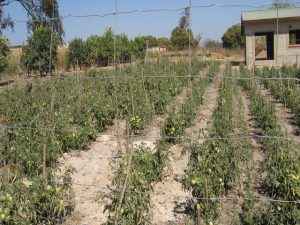
Fishing Project
Fish is one of the primary foods of Zambia so land was purchased when it was learned the property had two abandoned fish ponds. Two natural springs on Nano Farm supply a fish hatchery and eleven large earth dug ponds. Each of these large ponds can hold up to 5,000 fish. Recently, four cement tanks were constructed to contain the breeding fish and newly hatched fry (baby fish). Using plastic sheets to create a greenhouse effect, the tanks are protected from the cold in winter and scavenger birds. Two of these ponds are divided into smaller sections for the fry. They remain there until they are big enough to put into regular ponds. The cement tanks are heated to supply warm water for the fry as well as for the breeding fish. This prolongs the breeding season.
A local college and the Provincial Fishery Department bring students to the farm to teach them how to construct fish ponds and care for the fish. Students from other countries often visit the farm. Proceeds from the farm and fish ponds help to pay expenses. Profits are used to continue assisting the poor to become self-sustaining.
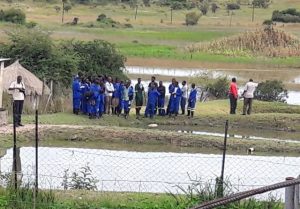
Education
Funds are given to students in need of school fees, supplies and uniforms. Presently, one of the students, who was sponsored throughout high school, is now enrolled in Medical School.
Workshops are conducted on Care of the Earth at our conference center located on Nano Farm. To save Mother Earth, participants are given hands on experience making compost for their crops rather than using chemical fertilizer. Since we use solar power and biogas, made from cow manure, students also learn about these alternative ways to create electricity.
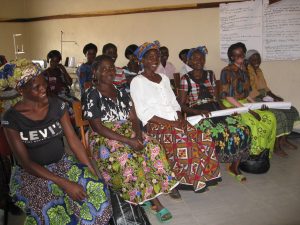
Emergency Fund
The primary purpose of the Emergency Fund is to assist elderly persons in need. Several persons receive a supply of food each month. Three houses have been constructed for persons whose homes were destroyed by fire and storms. Sometimes assistance is needed for funeral expenses and transportation.
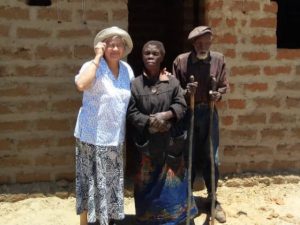
Ministry Needs / Ways to Get Involved
This ministry seeks partners to assist with funding for the following needs.
Farming and Fishing
• Medical care for animals
• Feed and supplies for animals
• Seed and fertilizer for crops
• Equipment for planting of crops (plows, reapers, hoes, rakes, etc)
Education Scholarships
• Primary Education
• Secondary Education
• Vocational / College Education
Workshops
• Agricultural
• Business
• Food Security
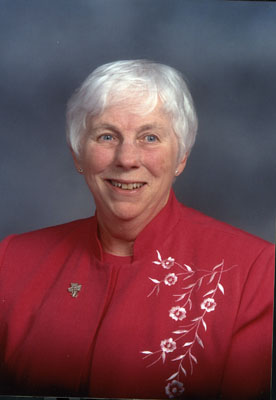
Presentation Sister in Ministry
Sister Virginia McCall grew up in Mitchell, SD, and earned a Bachelor of Arts Degree from Marquette University, a Master of Arts Degree from the University of Wisconsin, and did post graduate work at St. Thomas University, Seattle University and the University of Notre Dame. Sister Virginia was an educator in South Dakota and Minnesota schools for 13 years before serving in pastoral ministry in Sioux Falls, SD, and Mound, MN. She later became the director of ministry to separated, divorced and widowed in the Diocese of Davenport, IA, the Archdiocese of Dubuque, IA and the Archdiocese of Miami. Sister Virginia was elected to the Presentation Leadership Council in 1982 and again in 1994. In 1998, she was elected president of the congregation and served two terms. In 2006, during a sabbatical, she worked with the poor in Juarez, Mexico; New Orleans, LA; Belle Glade, FL; Davie, FL and New York, NY. After spending ten years working in Kaoma, Zambia, Africa, Sister Virginia continues to work with Presentation Sisters in Kaoma via internet and WhatsApp. To read more about Sister Virginia, please CLICK HERE.
